
Switzerland - Pilatusbahn
For a full scale picture, please click on the picture shown !
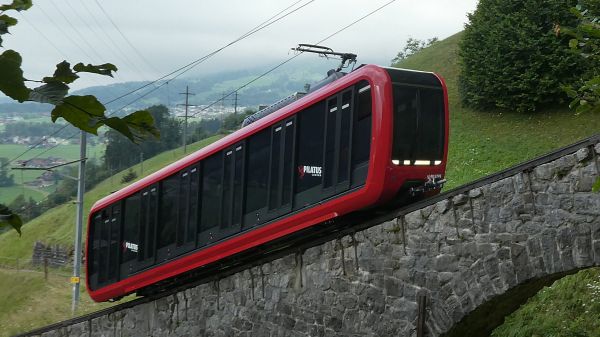
Pilatusbahn is the world's steepest cog wheel driven railway. It runs from the small village of Alpnachstad near the city of
Luzern up to Pilatus Kulm at 2073 meters above sea level. The starting point at Alpnachstad is just 440 m above sea level.
The line is 4,27 kilometers long and its steepest gradient is 48% (Yes: 480 promille!!). The line is electrified with 1650 V DC.
One of the new Pilatusbahn trains which started its commercial operations during the summer of 2023. This is a fully automated train. There
is just one person down at Alpnachstad who can remotely monitor the exact position and operation of all these automated trains. They can also
be coupled to form longer units, typically two of these together. This is the new Bhe 2/2 no.41.
Picture from above Alpnachstad 8.8.2022 by Wikipedia user "Au des Kolbo". Published under the Creative Commons
Attribution-ShareAlike 4.0 International (CC BY-SA 4.0) license.
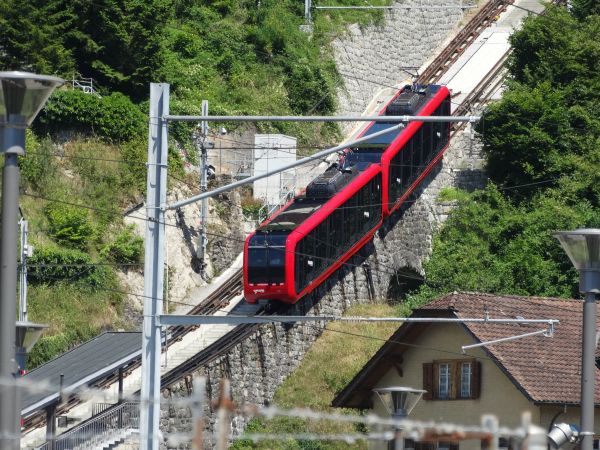
Two of the new Pilatusbahn BHe 2/2 trains coupled together ascending down from Pilatus Kulm and within seconds reaching the lower end station
at Alpnahstad. Notice how much wider the trains are than the track and the old stone bridge. This is possible due to the special two cog
wheels technology used which locks the train onto its tracks. See below for details.
Picture from Alpnahstad 11.7.2023 by Ilkka Siissalo.
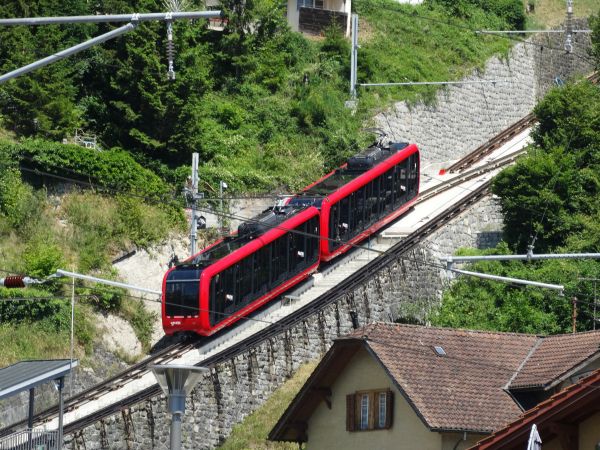
The same pair but now seen a bit more from their side. Notice also the highly complex switch by which the train is just changing tracks.
Picture from Alpnahstad 11.7.2023 by Ilkka Siissalo.
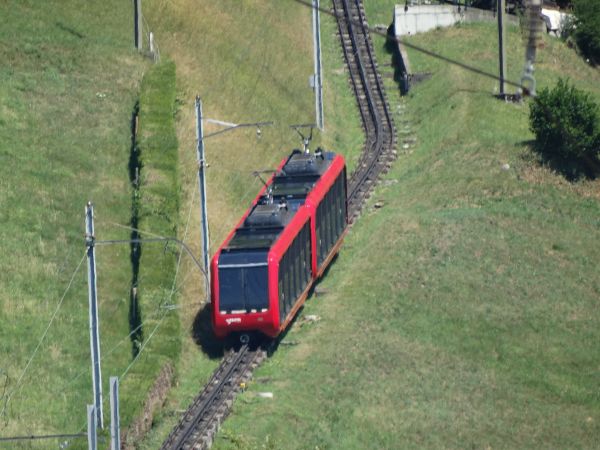
The same pair of BHe 2/2 trains as above, here still a moment earlier just appoaching Alpnahstad but still at a quite steep section of the track.
Picture from Alpnahstad 11.7.2023 by Ilkka Siissalo.
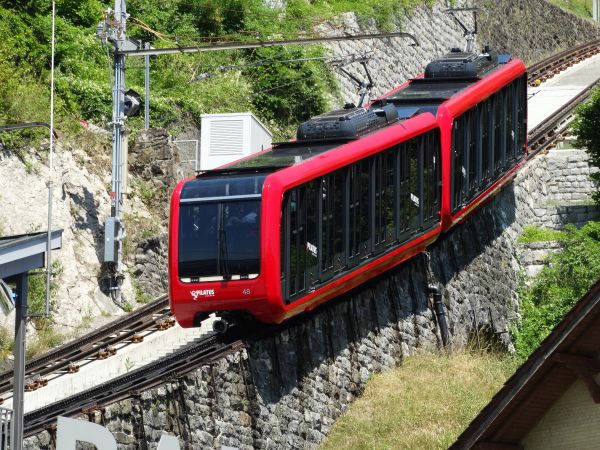
A closeup look at the same pair of new trains.
Picture from Alpnahstad 11.7.2023 by Ilkka Siissalo.
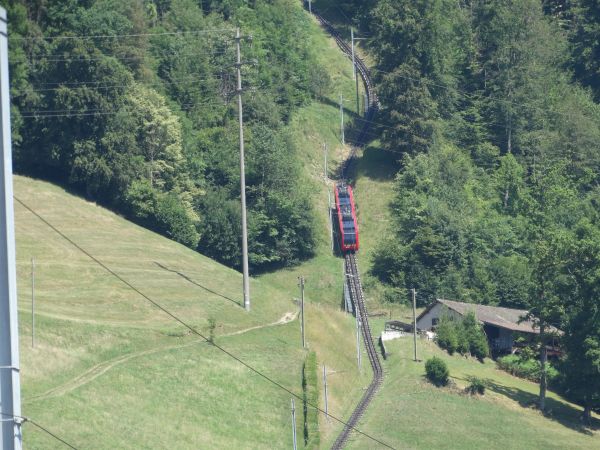
This shows clearly how extremely steep the Pilatusbahn line is.
Picture from Alpnahstad 11.7.2023 by Ilkka Siissalo.
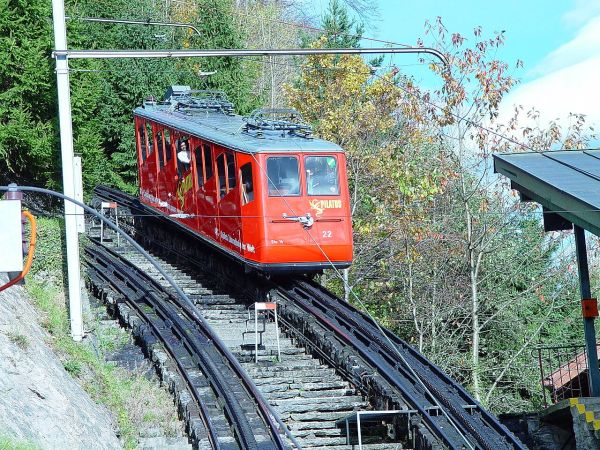
This old motor wagon BHe 1/2 was built in 1937. After the modernisation of the Pilatusbahn line two of these wagons will still
be kept in working condition. However since they are missing all the modern technology of the new trains, they can only operate
during times when all normal, automatic operation has been stopped.
Picture from Alpnachstad 27.10.2002 by Ilkka Siissalo.

Motor wagon BHe 1/2 just arriving at the lower end of the line.
Picture from Alpnachstad 27.10.2002 by Ilkka Siissalo.
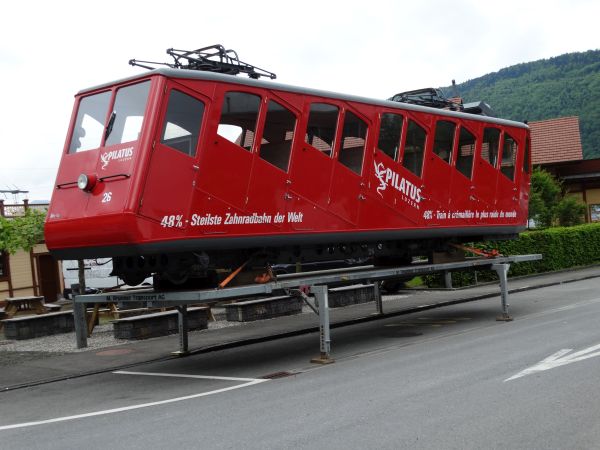
One of the old BHe 1/2 wagons will be kept at the national traffic museum Verkehrshaus in Luzern. Here we see it at Alpnachstadt ready to be
transported to the museum.
Picture from Alpnachstad 13.5.2023 by Ilkka Siissalo.
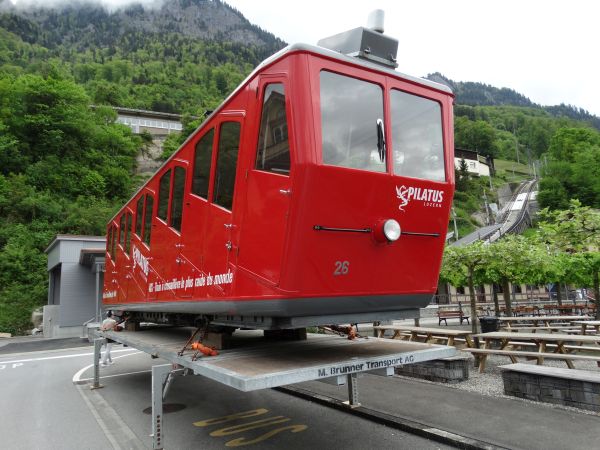
The upper end of the old wagon which was to be transported to the museum.
Picture from Alpnachstad 13.5.2023 by Ilkka Siissalo.
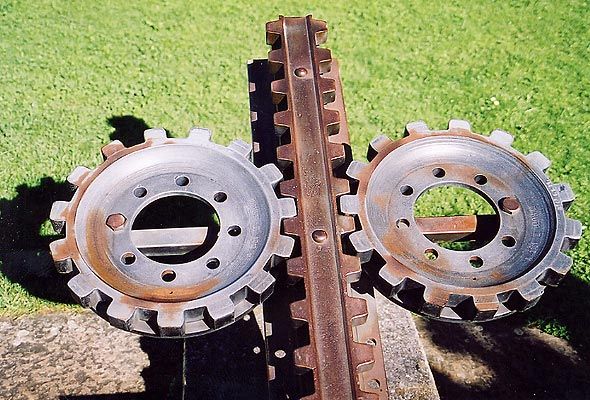
Because the gradient at the Pilatusbahn is so steep a normal rack rail system where a cog wheel runs on top of a rack rail cannot
be used. There would be a risk that the whole wagon could "climb" up from the rails. Instead there are two cog wheels which touch
a special rack rail from both sides simultaneously and lock the train onto the rails so that it cannot climb up.
Picture taken by an unknown photographer who has published this at the Wikipedia under the
Creative Commons Attribution-Share Alike 3.0 Unported license.
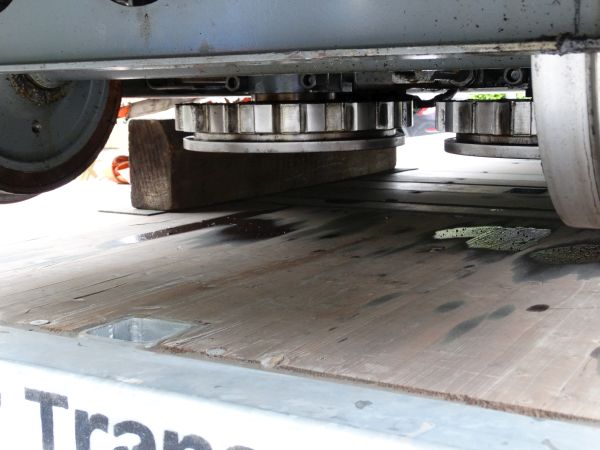
A view towards the underside of the old wagon which was ready to be transported to the Verkehrshaus museum showing clearly the double cog wheels
which take a firm grip on the rack rail and prevent the wagon from climbing up from the rails.
Picture from Alpnachstad 13.5.2023 by Ilkka Siissalo.
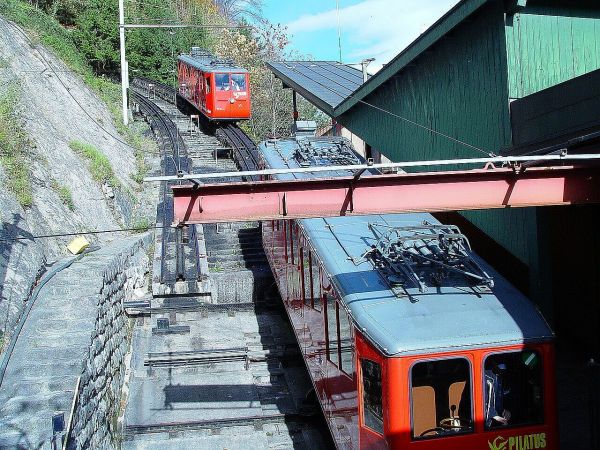
In the old days, before summer of 2022, it was a common practise that during times with a lot of tourists even up to five of these
old small trains would be driving in the same direction following each other at close distances. The line has just one place where
two trains could pass each other. In this old operations mode there was no security system whatsoever and everything happened by
eyesight manually. But the operational speed of the trains was just 6 to 8 km/h. Here we see a second train just arriving at
Alpnahstad closely following the first one.
Picture from Alpnachstad 27.10.2002 by Ilkka Siissalo.
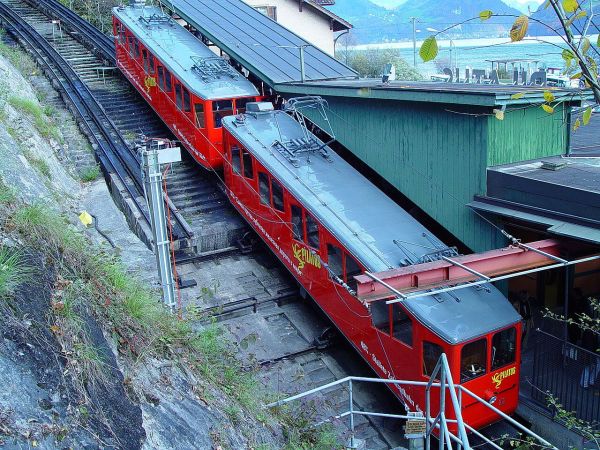
Here the same two old trains were ready to start climbing up aagin following each other. Their pantographs have already been lifted up.
Picture from Alpnachstad 27.10.2002 by Ilkka Siissalo.

A closer look at one of the old trains. Considering that they were built already in 1937 and this picture was taken in 2002 they had been
kept in surprisingly perfect condition.
Picture from Alpnachstad 27.10.2002 by Ilkka Siissalo.

Pilatusbahn has also had two cargo trains for transporting heavy goods up to Pilatus Kulm, where even a large hotel is being operated.
This one, Ohe 1/2 no.31, will now also be replaced as a part of the modernising programme. A new cargo train has been ordered.
Picture from just below Pilatus Kulm 21.9.2021 by Wikipedia user "Au des Kolbo". Published under the Creative Commons
Attribution-ShareAlike 4.0 International (CC BY-SA 4.0) license.

